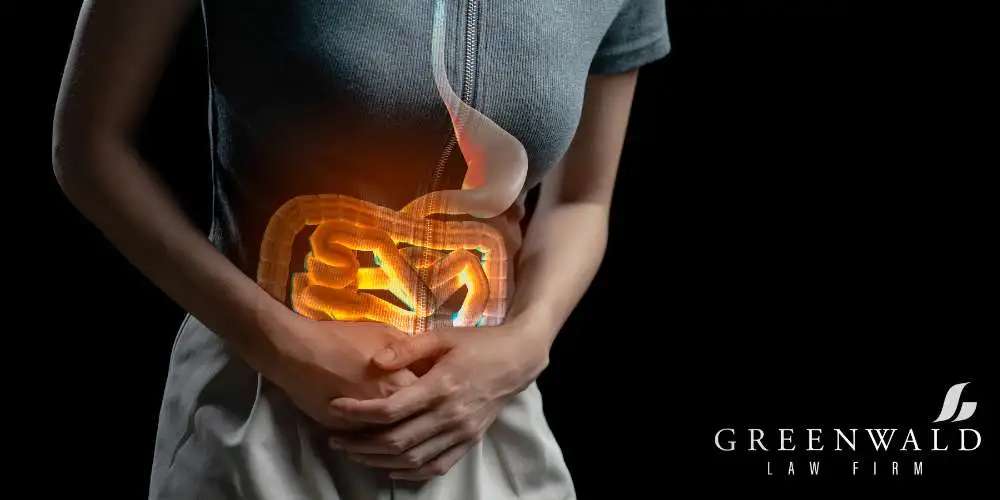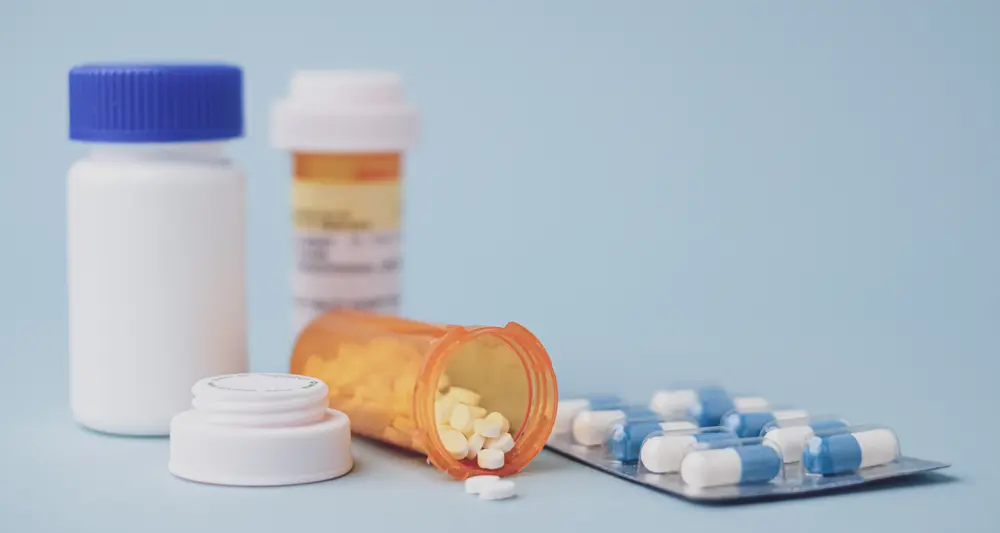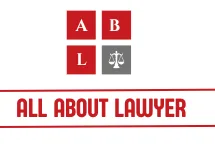GLP-1 Lawsuit, Stomach Paralysis, Blindness Claims, and What 2,914 Victims Need to Know About Ozempic Legal Case
Nearly 500 deaths linked to GLP-1 medications like Ozempic have been reported to the FDA. Now, nearly 3,000 lawsuits are moving through federal courts as patients who trusted these blockbuster weight loss drugs face life-altering injuries they say manufacturers never properly warned them about.
If you or someone you love took Ozempic, Wegovy, Mounjaro, or similar GLP-1 medications and developed severe stomach problems or sudden vision loss, you need to understand what’s happening right now in one of America’s fastest-growing pharmaceutical lawsuits.
What Is the GLP-1 Lawsuit? The Fast Facts You Need
The GLP-1 lawsuit involves thousands of people who took popular diabetes and weight loss medications—including Ozempic, Wegovy, Saxenda, Victoza, Mounjaro, Rybelsus, and Zepbound—and suffered serious health complications.
As of November 2025, there are now 1,300 lawsuits pending in federal court against manufacturers Novo Nordisk and Eli Lilly. The central claim: these companies failed to adequately warn patients about devastating side effects including gastroparesis (stomach paralysis), intestinal blockages, and sudden blindness.
Here’s what makes this lawsuit urgent:
A master complaint filed in November highlighted nearly 500 deaths in the U.S. linked to semaglutide medications, including Ozempic, Wegovy, and Rybelsus, according to FDA adverse event data.
The cases are consolidated in federal court in Pennsylvania under MDL 3094 (Multidistrict Litigation), which streamlines thousands of similar claims. The Ozempic / GLP-1 MDL now has 2,914 pending cases, an increase of 800 new cases since August, with roughly 200 new cases added monthly.
Who’s Being Sued? The Manufacturers Behind GLP-1 Drugs
Two pharmaceutical giants face the bulk of these lawsuits:
Novo Nordisk manufactures:
- Ozempic (diabetes treatment, off-label weight loss)
- Wegovy (FDA-approved weight loss)
- Rybelsus (oral diabetes medication)
- Saxenda (weight loss)
- Victoza (diabetes treatment)
Eli Lilly manufactures:
- Mounjaro (diabetes and weight management)
- Zepbound (weight loss)
- Trulicity (diabetes treatment)
Novo Nordisk’s Ozempic claims an estimated 40% of the U.S. GLP-1 market, with 38% of users primarily seeking weight loss rather than diabetes management.
The Legal Claims: What Patients Are Alleging
Lawsuits against GLP-1 manufacturers center on failure to warn and negligent marketing. Here’s what plaintiffs claim:
Inadequate Warning Labels
Gastroparesis is not included on the Ozempic warning label as a risk or side effect. It’s only briefly mentioned in technical sections describing how the drug works—not as a potential permanent injury.
Aggressive Marketing Without Full Disclosure
The complaint details injuries such as debilitating vomiting, intestinal obstruction, gastroparesis requiring emergency care and hospitalization, vitamin deficiencies, pancreatitis, and more serious complications that patients say they were never warned about.
Off-Label Promotion
In 2018, Novo Nordisk began mentioning weight loss in Ozempic commercials even though the FDA had not approved the drug for this purpose, according to legal filings.

The Injuries: Gastroparesis, Vision Loss, and Other Severe Side Effects
Gastroparesis (Stomach Paralysis)
Gastroparesis, also called delayed gastric emptying, prevents the stomach’s nerves and muscles from working properly, resulting in food sitting too long in the stomach.
Symptoms include:
- Severe, uncontrollable vomiting lasting weeks or months
- Chronic nausea and inability to keep food down
- Dangerous weight loss and malnutrition
- Need for feeding tubes or hospitalization
- Permanent digestive dysfunction
The shocking reality: Probably 1% or less experience gastroparesis—the slowing down of the movement in the stomach permanently, according to a former Harvard diabetes expert. That risk is often not disclosed to patients before prescribing.
NAION Vision Loss (Sudden Blindness)
NAION (non-arteritic anterior ischemic optic neuropathy) is a sudden loss of vision caused by reduced blood flow to the optic nerve. It’s the second most common optic neuropathy and often results in permanent blindness.
The research is alarming:
Patients with Type 2 diabetes who took semaglutide-containing medications had more than a fourfold higher risk for developing NAION compared with patients not on a GLP-1 agonist. Overweight people who took semaglutide for weight loss had a more than sevenfold higher risk.
In June 2025, the World Health Organization (WHO) warned that semaglutide drugs, such as Ozempic, Wegovy and Rybelsus, may rarely cause NAION.
Other Reported Injuries Include:
- Ileus (bowel obstruction)
- Intestinal blockages requiring surgery
- Pulmonary aspiration during anesthesia
- Deep vein thrombosis (DVT)
- Pancreatitis
- Gallbladder injuries
- Wernicke’s Encephalopathy (brain disorder)
- Severe malnutrition requiring hospitalization
Approximately 24,500 patients visited the Emergency Room in 2022 and 2023 due to side effects of Ozempic and other popular semaglutide weight loss drugs. Of these ER visits, nearly 70% involved gastrointestinal issues.
Current Legal Status: Where the GLP-1 Lawsuits Stand in 2024
MDL 3094: Federal Court Consolidation
The United States Judicial Panel on Multidistrict Litigation found that the actions in this MDL “involve common questions of fact, and that centralization in the Eastern District of Pennsylvania will serve the convenience of the parties and witnesses”.
Judge Karen S. Marston presides over the consolidated federal litigation in Philadelphia.
Key Recent Developments
Science Day (September 2024): The parties provided the court with an overview of medical and scientific issues associated with GLP-1 medications and the injuries alleged by plaintiffs.
Discovery Limitations: In October 2024, Judge Marston ruled to limit discovery in the GLP-1 litigation, allowing only a narrow focus on FDA-approved warning labels and potential preemption issues.
Vision Loss Track: Plaintiffs’ leadership submitted a motion requesting the formal creation of a “Vision Injury Track” within MDL 3094. Over 140 cases in the MDL now involve claims of partial or total blindness.
Bellwether Trials: The first GLP-1 lawsuits are unlikely to go before federal juries until at least 2027 due to complex scientific and legal issues that must be resolved first.
Who Qualifies to File a GLP-1 Lawsuit?
You may be eligible to join the litigation if:
You Used a GLP-1 Medication:
- Ozempic, Wegovy, Rybelsus (Novo Nordisk)
- Mounjaro, Zepbound, Trulicity (Eli Lilly)
- Saxenda or Victoza (Novo Nordisk)
You Suffered Documented Injuries:
- Gastroparesis or stomach paralysis confirmed by gastric emptying studies
- NAION or sudden vision loss diagnosed by an ophthalmologist
- Ileus or intestinal blockage requiring hospitalization
- Severe vomiting, dehydration, or malnutrition needing medical intervention
- Pulmonary aspiration during surgery
- Other serious gastrointestinal complications
You Have Medical Documentation:
- Prescription records showing GLP-1 use
- Medical records confirming your diagnosis
- Treatment records (hospitalizations, ER visits, specialist consultations)
- Evidence the injury occurred while using or shortly after stopping the medication
Many patients continue to experience symptoms long after discontinuing the medication. What matters is whether your medical records show that the onset of stomach paralysis or chronic vomiting followed GLP-1 exposure.
How Much Are GLP-1 Lawsuit Settlements Worth?
While no settlements have been reached yet, legal experts are evaluating potential compensation based on:
Medical Expenses:
- Emergency room visits and hospitalizations
- Diagnostic testing (gastric emptying studies, endoscopies, eye exams)
- Ongoing treatment and specialist care
- Surgery costs (feeding tubes, corrective procedures)
- Future medical needs
Lost Income:
- Time off work for medical appointments and hospitalizations
- Reduced earning capacity due to permanent disability
- Lost career opportunities
Pain and Suffering:
- Chronic pain and discomfort
- Emotional distress and depression
- Loss of quality of life
- Permanent disability (vision loss, digestive dysfunction)
Punitive Damages: In cases of egregious corporate misconduct, courts may award punitive damages to punish manufacturers and deter similar behavior.
One client mentioned receiving “a fair six figure settlement” in a related product liability case, though specific GLP-1 settlement amounts haven’t been publicly disclosed yet.
How to File a GLP-1 Lawsuit: The Step-by-Step Process
Step 1: Gather Your Evidence
Collect all documentation related to your GLP-1 use and injuries:
- Prescription bottles with labels showing your name and medication
- Medical records detailing your diagnosis
- Hospitalizations and ER visit records
- Test results (gastric emptying studies, vision tests)
- Treatment plans and specialist notes
Step 2: Get a Free Case Evaluation
Attorneys can discuss what happened to you and determine if you are eligible to seek compensation from Novo Nordisk or Eli Lilly and Company at no upfront cost.
Most GLP-1 lawsuit attorneys work on contingency, meaning you pay nothing unless they win your case.
Step 3: File Before Deadlines Expire
Act quickly. Most states have a 2-3 year statute of limitations from the date you discovered your injury. Some exceptions may apply, but waiting too long could prevent you from recovering compensation.
The time limit to file a lawsuit varies by state and circumstances, so you really need to act quickly.
Step 4: Join the Federal MDL
In February 2024 all GLP-1 lawsuits were grouped together into one federal court for what is called a Multidistrict Litigation, or MDL. Your attorney will transfer your case to MDL 3094 in Pennsylvania, where it will be coordinated with thousands of similar claims.

Understanding Pharmaceutical Product Liability Law
GLP-1 lawsuits fall under product liability law, which holds manufacturers responsible when defective or dangerous products cause harm.
Three Types of Product Defects
Design Defects: The product is inherently dangerous due to its design.
Manufacturing Defects: Errors in production make specific products dangerous.
Marketing Defects (Failure to Warn): The manufacturer fails to provide adequate warnings about known risks.
GLP-1 lawsuits primarily involve failure to warn claims. The lawsuits claim drugs like Ozempic, Wegovy and Mounjaro caused extreme and unadvertised side effects.
Strict Liability vs. Negligence
In many product liability cases, manufacturers can be held liable even without proof of negligence. However, pharmaceutical companies often benefit from the “learned intermediary doctrine,” which requires them to warn doctors—not patients directly.
The key question: Did manufacturers provide adequate warnings to prescribing physicians about the severity and permanence of gastroparesis, NAION, and other complications?
What Defendants Are Arguing: The Manufacturers’ Defense
Both Novo Nordisk and Eli Lilly maintain their medications are safe when used as directed.
Novo Nordisk stands behind the safety and efficacy of all of our GLP-1 medicines when they are used as indicated and when they are taken under the care of a licensed healthcare professional, spokesperson Jamie Bennett stated.
Key Defense Arguments:
FDA Approval: The drugs were rigorously tested and approved by the FDA, with risks disclosed on product labels.
Preemption Defense: Federal law may prevent state lawsuits if companies complied with FDA requirements.
Causation Challenges: One of their main points was that plaintiffs could not prove causation at future trials connecting GLP-1 use directly to injuries.
Diagnostic Requirements: Claims of stomach paralysis must now be tied to a gastric emptying study or equivalent test, potentially eliminating cases based solely on clinical symptoms.
Expert Voices: What Medical Professionals Are Saying
The medical community is divided on GLP-1 safety:
Concerns from Healthcare Providers:
“Everybody wants to be on these drugs,” which are often viewed as “magic,” said Clipper Young, a clinical pharmacist at Touro University California. But he emphasizes the need for careful monitoring.
FDA Response:
FDA is “evaluating the need for regulatory action” after receiving numerous reports of severe gastrointestinal side effects.
In early July, District Judge Karen S. Marston scheduled a Science Day on September 4, 2024, where parties provided the court with an overview of medical and scientific issues.
Patient Perspectives:
“I couldn’t keep anything down. I couldn’t eat anything. I couldn’t drink anything. I had such burning in my stomach and in my chest that nothing helped,” said Monica Church, who was hospitalized for two weeks with gastroparesis after using Ozempic.
Related Cases: Precedent in Pharmaceutical Litigation
GLP-1 lawsuits echo patterns from other major pharmaceutical cases:
Vioxx (Merck): Withdrawn in 2004 after being linked to heart attacks. Merck eventually settled for $4.85 billion.
Xarelto (Bayer/Janssen): Blood thinner linked to uncontrollable bleeding. Settled for $775 million in 2019.
Taxotere (Sanofi): Chemotherapy drug causing permanent hair loss. Multiple jury verdicts and settlements totaling hundreds of millions.
Suboxone (Indivior): Lawsuits are being pursued by users of Suboxone who experienced tooth loss, broken teeth or required dental extractions.
The GLP-1 litigation could follow similar trajectories if evidence of inadequate warnings continues mounting.
Timeline: Key Dates in the GLP-1 Lawsuit
August 2023: The first lawsuit related to GLP-1 induced stomach paralysis was filed.
February 2024: At least 55 lawsuits were consolidated into an MDL in the Eastern District of Pennsylvania.
September 2023: FDA added ileus warnings to Ozempic labels.
January 2025: The Ozempic label was updated to state that it is “not recommended in patients with severe gastroparesis,” but does not indicate that the drug itself may cause the condition.
November 2024: Plaintiffs filed a comprehensive master complaint alleging that GLP-1 drug manufacturers failed to adequately warn patients.
November 2025: The MDL grows to 2,914 pending cases.
2027 (Projected): First bellwether trials expected to go before federal juries.
Frequently Asked Questions About GLP-1 Lawsuits
Can I sue if I only experienced mild nausea or vomiting?
Symptoms that are listed as side effects, like diarrhea, vomiting, nausea, etc. typically don’t qualify for lawsuits unless they became severe, persistent, and required hospitalization or led to diagnosed conditions like gastroparesis.
What if I stopped taking the medication months or years ago?
Many patients continue to experience symptoms long after discontinuing the medication. As long as your injury occurred during or shortly after GLP-1 use and is documented in medical records, you may still qualify.
Do I need to prove my doctor didn’t warn me?
No. Even if your doctor said the drug was safe, manufacturers are responsible for providing adequate warnings. Your claim would generally target the company, not the prescribing physician, unless there’s clear medical negligence.
Are gallbladder injuries eligible?
Novo Nordisk added a gallbladder warning in March of 2022. This effectively disqualifies anyone with gallbladder complications who took the drug after March 2022 for federal MDL inclusion.
What if I took a compounded version of semaglutide?
Lawsuits primarily target brand-name manufacturers. However, some lawsuits against healthcare providers involve medical malpractice claims tied to off-label use of compounded medications.
How long will the lawsuit take?
The first GLP-1 lawsuits are unlikely to go before federal juries until at least 2027. However, settlement negotiations could occur sooner as evidence develops.
Will I have to testify in court?
Most cases settle before trial. If yours goes to trial, your attorney will prepare you thoroughly. However, being part of an MDL means only selected “bellwether” cases go to trial first.
Can I still file if the statute of limitations passed?
Possibly. Some states have “discovery rules” that extend deadlines to when you discovered (or should have discovered) the connection between your injury and GLP-1 use. Consult an attorney immediately to assess your specific situation.
Take Action: Protect Your Rights Today
If you or a loved one suffered gastroparesis, vision loss, or other serious complications from GLP-1 medications, time is critical.
Why You Need to Act Now:
- Statutes of limitations are ticking (typically 2-3 years)
- Medical records become harder to obtain over time
- Earlier filers may benefit from priority in settlement negotiations
- If the litigation has grown as much as we think it may have, Novo Nordisk and the other defendants will be facing significant pressure to give serious consideration to settling
What To Do Next:
- Document everything: Gather prescription records, medical files, and evidence of your injuries
- Get evaluated: Contact experienced product liability attorneys for a free case review
- Don’t wait: Protect your legal rights before deadlines expire
The manufacturers of GLP-1 medications have earned billions while patients face life-altering injuries. You deserve answers, accountability, and compensation for the harm you’ve suffered.
Disclaimer: This article provides general information about the GLP-1 lawsuit and should not be construed as legal advice. If you believe you have a claim, consult with a qualified attorney who can evaluate your specific circumstances. This content is current as of November 2024 and may not reflect the most recent legal developments.
About the Author

Sarah Klein, JD, is a licensed attorney and legal content strategist with over 12 years of experience across civil, criminal, family, and regulatory law. At All About Lawyer, she covers a wide range of legal topics — from high-profile lawsuits and courtroom stories to state traffic laws and everyday legal questions — all with a focus on accuracy, clarity, and public understanding.
Her writing blends real legal insight with plain-English explanations, helping readers stay informed and legally aware.
Read more about Sarah
